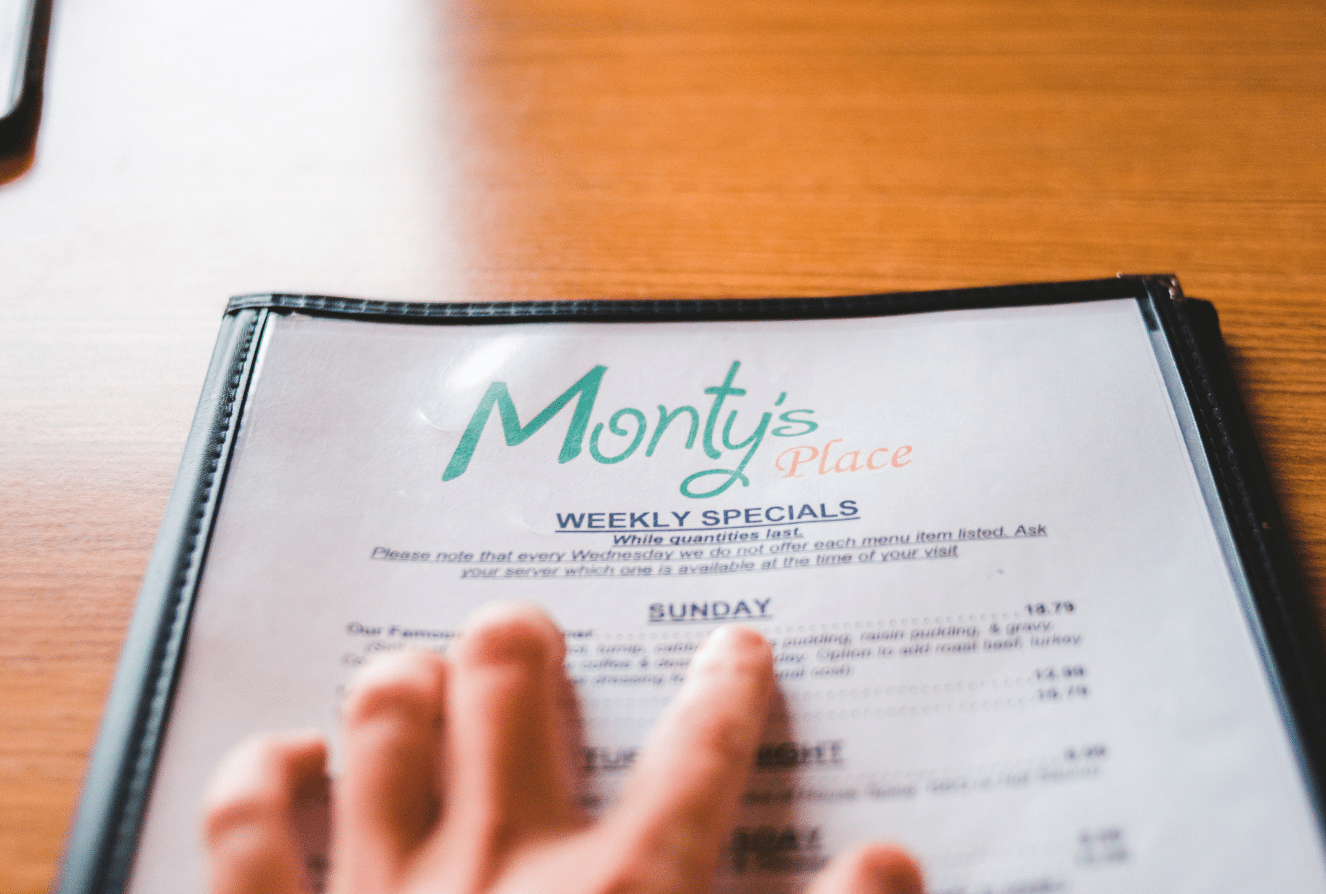When diners first step into a restaurant, there’s a lot to take in: the decor, the layout, the guests and employees, the overall “vibe.”
But for 99.9 percent of restaurants, it’s the menu that really matters to your guests — and to the success of your business. Your menu doesn’t have to be fancy or even unique: Whether you’re offering quick-service burgers or fine dining at its finest, strategically planning out your menu is a critical factor when it comes to restaurant profitability.
And even if your menu was thoughtfully planned: it’s wise to constantly evaluate what you’re offering, how it’s performing, and why it belongs there. Here’s what to think about when you’re planning (or revamping) your restaurant menu.
Menu planning overview
Menu planning starts with your restaurant concept. The best menus have a sense of creativity that feels true to a restaurant’s brand, whether that’s an homage to a childhood favorite dish or a masterpiece that took months and months of tinkering with flavors to create.
Planning your menu requires three steps:
- List out all of your menu items, including descriptions of each item.
- Categorize your items into different areas, like appetizers, entrees, or seafood.
- Set prices for each item.
Sounds easy, right? Not so much.
Why is menu planning important?
The menu planning process is actually one of the most complex you’ll go through as a restaurant business, because it combines business analysis (profit margins and cost/benefit analysis) with creativity (what inspires you) and design (what it looks like on paper or on your website). That’s a lot!
But it’s one of the most important processes your restaurant undergoes, especially if you rotate your menus with the seasons and suppliers. Menu planning, done right, evokes a feeling, harnesses your back-of-house skills and creativity, and flows together so that every diner leaves your restaurant happy and satisfied — and you turn a profit.
5 factors to consider when planning a menu
As you build out your menu, keep in mind:
- Length. Your menu should probably be smaller than you think! Unless you’re the Cheesecake Factory — known for their 21-page, 250-item coffee table-sized menu — you’ll want to come up with a short list of items that truly represent the best of what your kitchen has to offer. In fact, small menus are back in style — not just for fancy bistros but for well-known spots like Applebee’s, Red Robin, and iHOP, which have all downsized their menus in the last year.
- Quality. Every kitchen has strengths and weaknesses. Acknowledge where your staff is at and what they do well…and what doesn’t always hit the mark. If timing is an issue for a particular dish, cut it. If your customers complain about your breadsticks, cut them. Focus on what you do spectacularly well, and that’s what you’ll become known for.
- Costs. Prices have gone up, up, up this past year for everything from kale to cardboard boxes, shrinking already slim profit margins. Do the math for each menu item and cut the ones that don’t help you break even.
- Delivery. With takeout and delivery a core part of any restaurant model today, consider how each menu item handles transit time. Maybe now isn’t the time to debut too many fried or saucy items that don’t hold up well. Consider how you’ll package each item, too.
- Names and descriptions. You don’t order a double cheeseburger at McDonald’s — you order a Big Mac. While you don’t have to trademark every item you make, think about common mouthwatering descriptors to use for your menu items, like crispy, crunchy, fresh, hearty, smoky, or juicy. Keep your descriptions brief and specific so customers know exactly what they’re going to get when they order it.
How to develop a more profitable restaurant menu
The secret to a more profitable menu isn’t just about the food.
It’s about psychology. The average diner spends only 109 seconds looking at your menu. That mean they’re probably not reading it like a book; they’re skimming and scanning — often distracted by fellow guests, or servers coming and going — so you’ve got a short amount of time to make an impact. Whether you’re using a physical menu or putting it all online using QR codes, the way you design and lay out the menu matters just as much as what’s on it.
Here are a few steps to follow for a more profitable menu:
- As you evaluate your menu item ideas, create a grid with profitability on one axis and popularity on the other. Ideally, you want to maximize both profitability and popularity (the top right quadrant), as that’s where your big money-makers are that your customers love. Sort each item into the different quadrants, so you can identify your hits…and your duds. This is sometimes called menu engineering.
- Once you can see everything on one chart, you can start to take action. Cut anything that’s low in popularity and low in profitability, and then evaluate cost-saving opportunities for anything that’s popular but not very profitable. Your customers obviously love ordering that item, but can you make an ingredient swap that won’t impact the quality, but may help your margins? For anything that’s profitable but unpopular, consider a social media promotion, asking servers to talk it up at tables, or running a discount. Maybe your customers don’t know about it — or maybe your prices are a little too high.
- Think about how you’re putting your menu together to maximize your high profitability items. In vertically arranged menus, for example, the eye tends to gravitate toward the first and last items in a list, so any dishes in those spots will be big sellers. Another sweet spot? The upper right corner.
- Use visual cues like boxes, graphics, or typography to highlight big-ticket items and maximize space for your layout.
- As you work on your menu planning, test your menu designs and items and don’t discount customer feedback. If you have customers clamoring for a pastrami sandwich (or you’re known to have that as a “secret” item), offer it!
- Similarly, if you receive negative feedback on a specific menu item after more than one service, then you know you need to revisit it. Test out different menu designs, ask your customers what they think, and have fun with it — your menu is what makes you stand out!
Optimize your restaurant operations with digital tip payments
If you’re revamping your menu, it might be a good time to revamp your tip payment process, too. Digital tip payments cut your labor costs, eliminate bank runs, and reduce the risk of theft and error — all while helping you hire (and retain) more workers. See Kickfin’s digital tip payment platform in action!






![[Video] Whataburger, Dish Society and Kickfin Talk Employee Recruiting](https://kickfin.com/wp-content/uploads/2021/09/KF-Blog-Post-Images-19.png)


![[Product Announcement] It’s here: Introducing Kickfin 2.0!](https://kickfin.com/wp-content/uploads/2021/05/12.9-inch-iPad-Pro.png)